Getting ready for our excursion
Today was the first of our two days on Hawai’i, the Big Island. Surprisingly, Hawai’i is only 36 miles from Maui and you can easily see Maui from the northwest shore of Hawai’i. Our excursion today took us to Volcanoes National Park, and to a rainforest, an orchid nursery, and a macadamia nut plantation. We were hoping to see Kilauea’s flowing lava in the park, but learned that a large part of the park is currently closed. Kilauea is Hawai’i’s biggest tourist attraction. Its name means “The Spewing,” and it has erupted every day since 1983. The volcano is currently acting like it might produce a major eruption, so the flowing lava can only be viewed from a distance at sea right now. The rainforest, orchids, and nuts were safe for visitors.
Before leaving for the park, we had to gather in the ship’s theater to get our transportation instructions, etc. The lady telling us what to do was pretty amusing, considering it was 8:00 a.m. We were cautioned that Hawai’i has very strict agricultural rules. If we want to take macadamia nuts (or any other food purchase) home, we cannot open the packaging (seriously). The speaker warned us that if we are buying nuts as a gift for someone at home, it might be safer to have them shipped, since no one wants to receive a nut that used to be chocolate-covered. She told us that, except for those who requested a vegetarian lunch, the box lunches are all the same–last night’s leftovers. We were told that we’d be back at the ship around 3:30–except for those who signed up for the Volcano Sacrifice Tour.
On our way to the buses, I asked a driver if Hawaiians actually wear aloha shirts or if that’s part of the uniform for those who work with tourists. He told me he retired to Hawai’i with two dozen business suits and quickly learned that an aloha shirt is considered dressy; if it’s tucked in and accompanied by a lei, it’s formal.
Things I learned today
(1) If there is a tsunami, we should return to the ship. We are safest at sea during a tsunami. (2) The Hawaiian Island chain is 1,500 miles long, and extends to Midway Island. Kaua’i is old and in the erosion phase; Hawai’i is young and still growing. The entire chain is moving northward. At one time, Kaua’i was located where Hawai’i now exists. (3) Captain Cook was killed and cooked on Hawai’i. Hawai’i is geologically young and its scarce soil must be used for food. It’s impossible to dig a grave in lava rock, so bodies are cremated. (4) The “cleaner fish” is endemic to Hawai’i. It has an extra fin on its belly that acts as a suction cup. The fish uses the fin to clean other fish and will do the same to people in the water. These fish are sometimes used in spas for pedicures, etc. (5) Breadfruit can be cooked just like potatoes–boiled, fried, mashed, etc. I had some with my lunch one day and it tastes like potatoes, but just a little sweeter and creamier. (6) Macadamia nuts ripen at different times on the trees, then fall to the ground when they are ripe. They must be picked up by hand before they begin to rot on the ground, and that’s what makes them so expensive. (7) Five volcanoes built Hawai’i. Kilauea is the most active; Mauna Loa is the most massive; and Mauna Kea is the tallest–in Hawai’i and on earth. It rises 33,476 feet above its ocean floor base.
Photo gallery

This is a breadfruit tree. Breadfruit are a little larger than grapefruit.
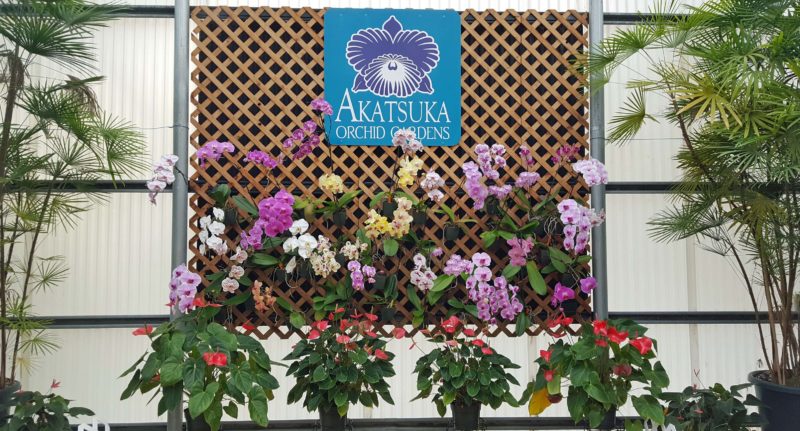
Some of the orchids at the orchid nursery. Hawai’i is well-known as the Big Island, but all the islands also have nicknames. Hawai’i’s nickname is The Orchid Island.
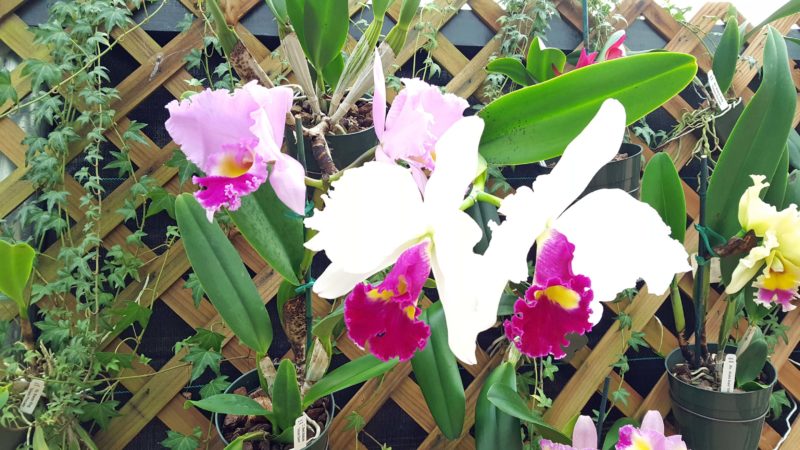
These orchids are huge. I should have included my hand in the picture for scale. They are gorgeous!
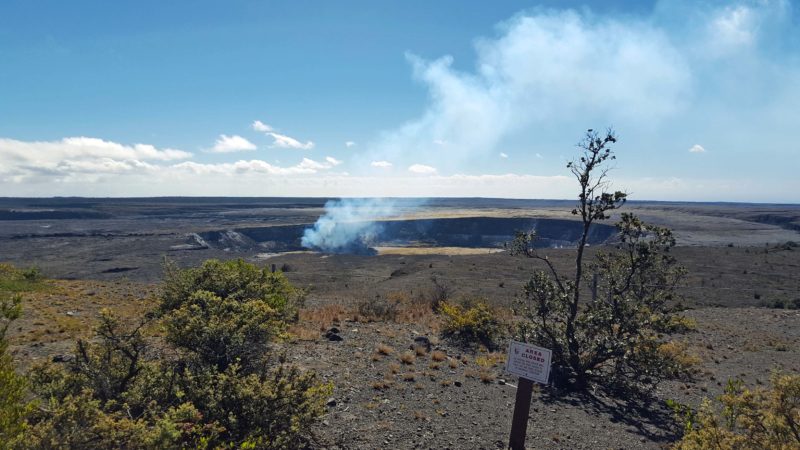
We were allowed to view this crater. Look closely–it’s a crater within a crater.
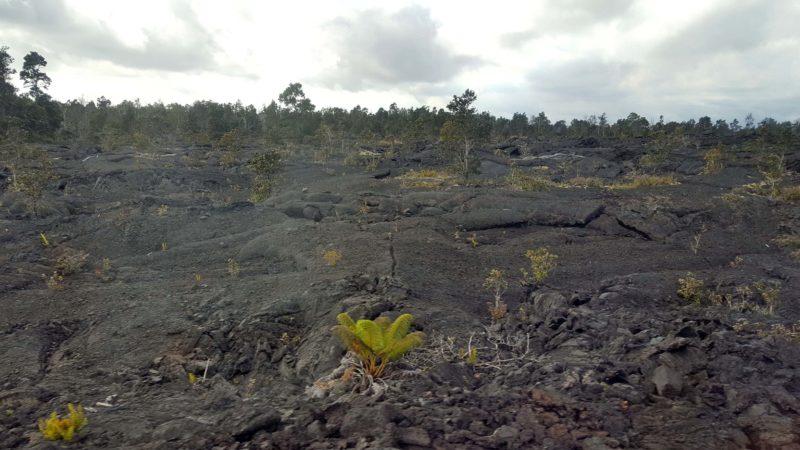
The Hawaiian Islands were built by shield volcanoes. Shield volcanoes have more flowing lava, rather than the kind that shoots rocks high into the sky. That’s why this lava looks smooth. It’s not–it’s like glass and will scrape your skin if you fall on it.

Plants are beginning to erode this lava to form soil.
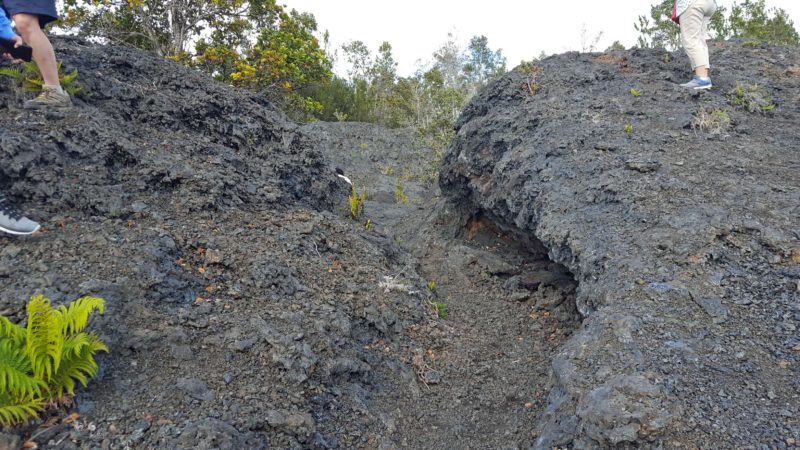
This is the beginning of a lava tube. During eruptions, lava repeatedly flows in this path, cutting away the bottom and sides and leaving residue at the top. Eventually, the residue meets on the top and forms a tube. Eruptions can send multiple plumes of lava upward through a lava tube to the surface.

Here’s an entrance to a quarter-mile long lava tube. The longest known lava tube on Hawai’i is 32 miles in length.
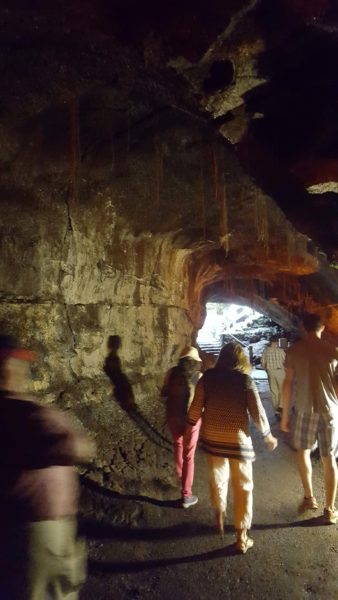
This lava tube is lighted inside, so we could find our way through it.

Hilo is on the east side of Hawai’i, so it’s in the rainy part and gets 120 inches of rain annually. We walked through a rainforest during our excursion today.
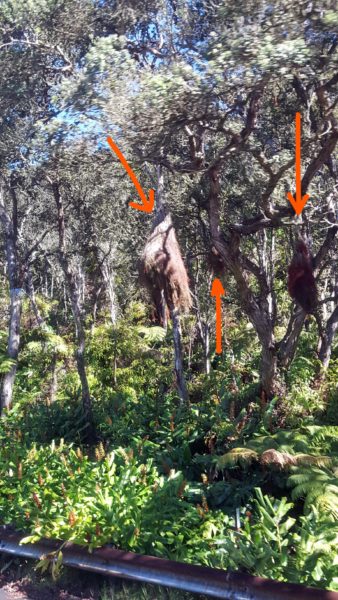
This tree can move itself if it doesn’t like where it’s growing or if conditions change. The large brown lumps indicated by the arrows are roots. Eventually, the branch to which they are attached will fall, and the roots will begin to grow a tree where they land. The process can be repeated by the tree as needed.
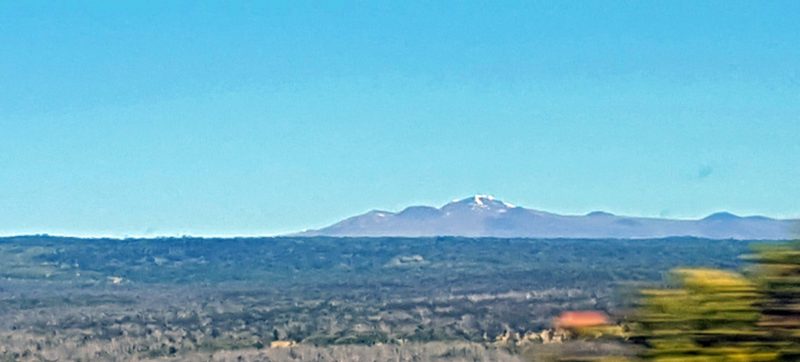
You have to be at a distance to see Mauna Loa (“Long Mountain”), so this picture isn’t great, but–hey!–it’s Mauna Loa, the world’s densest and most massive mountain, comprised of 10,000 cubic miles of iron-hard lava. It rises 30,085 feet from its ocean floor base–not quite as high as Mauna Kea.